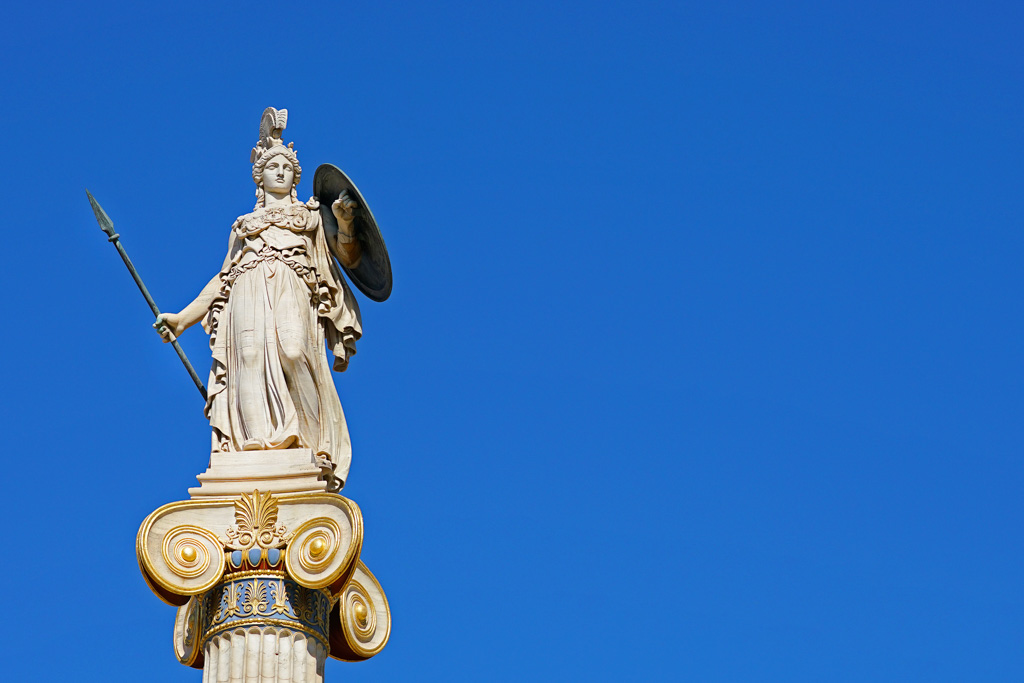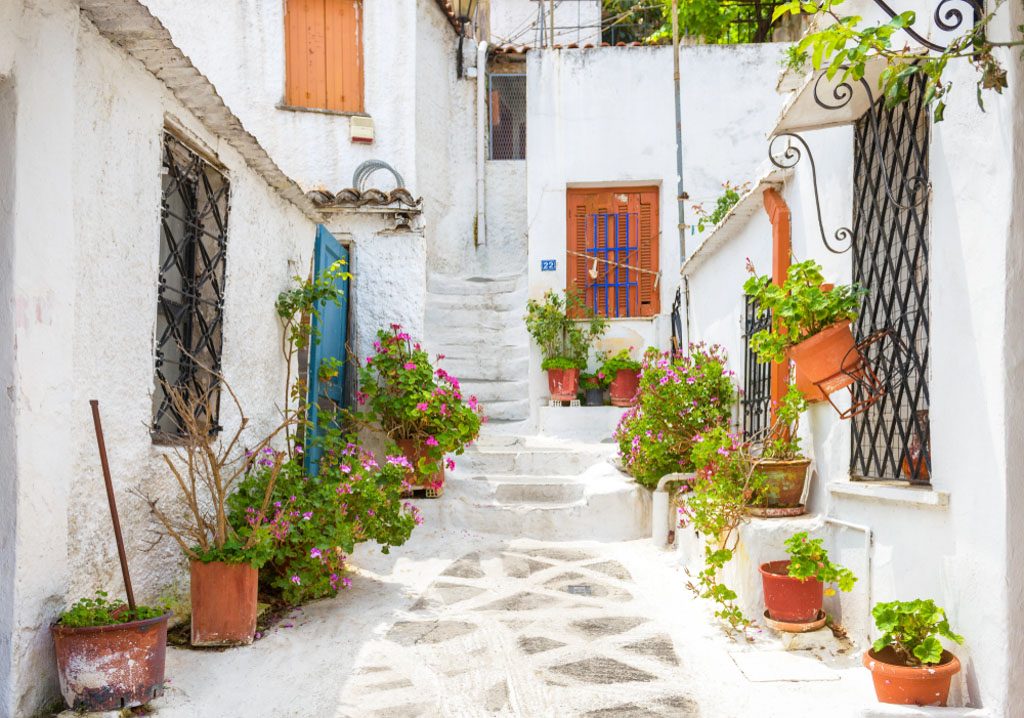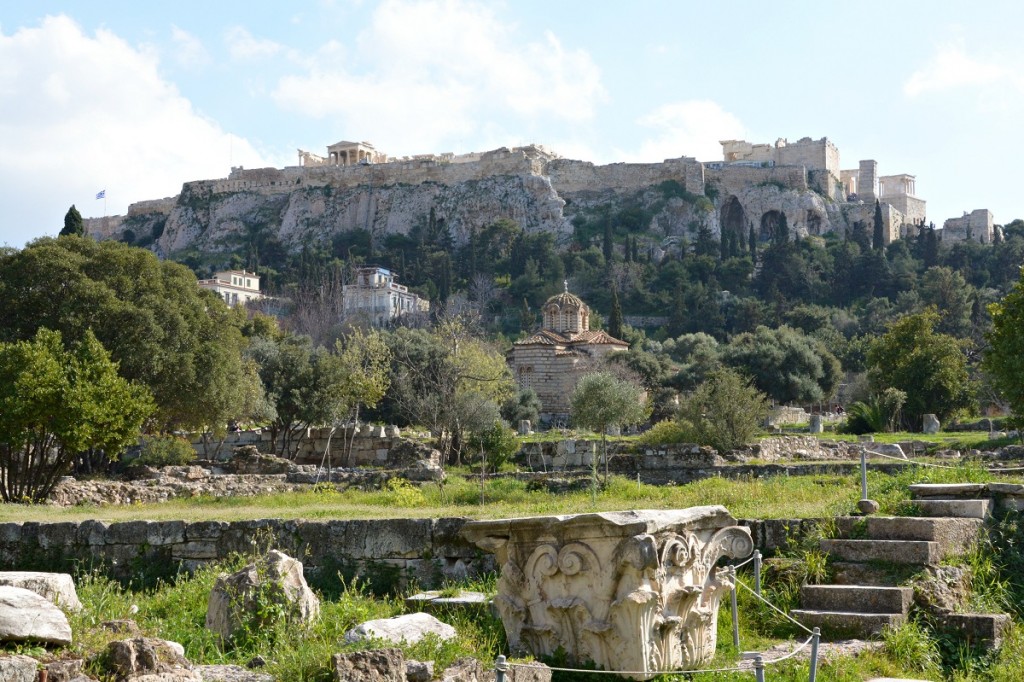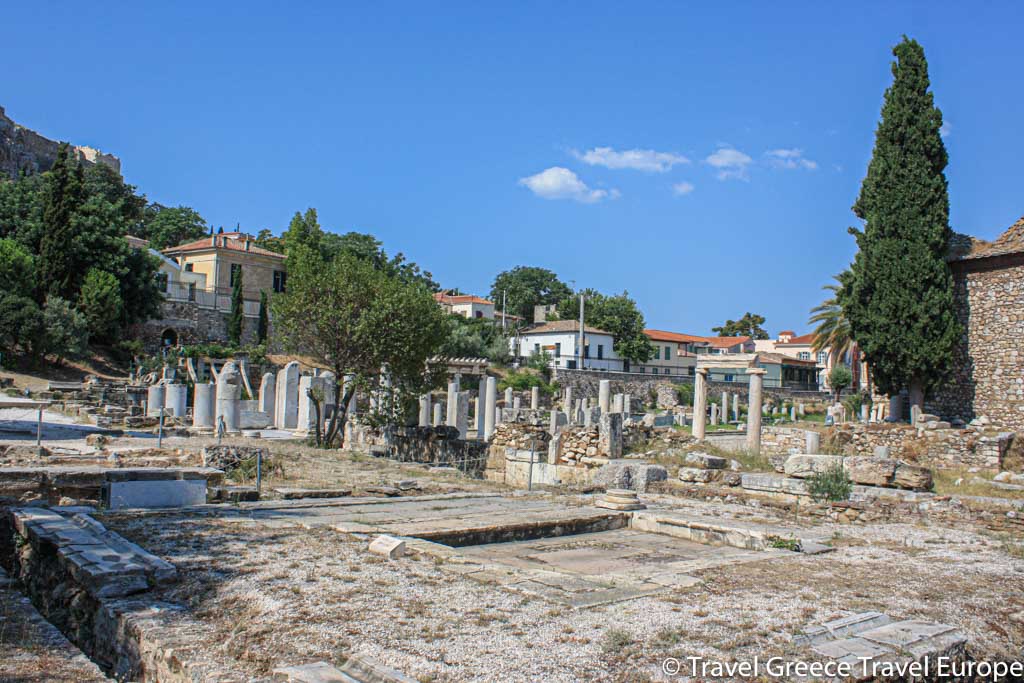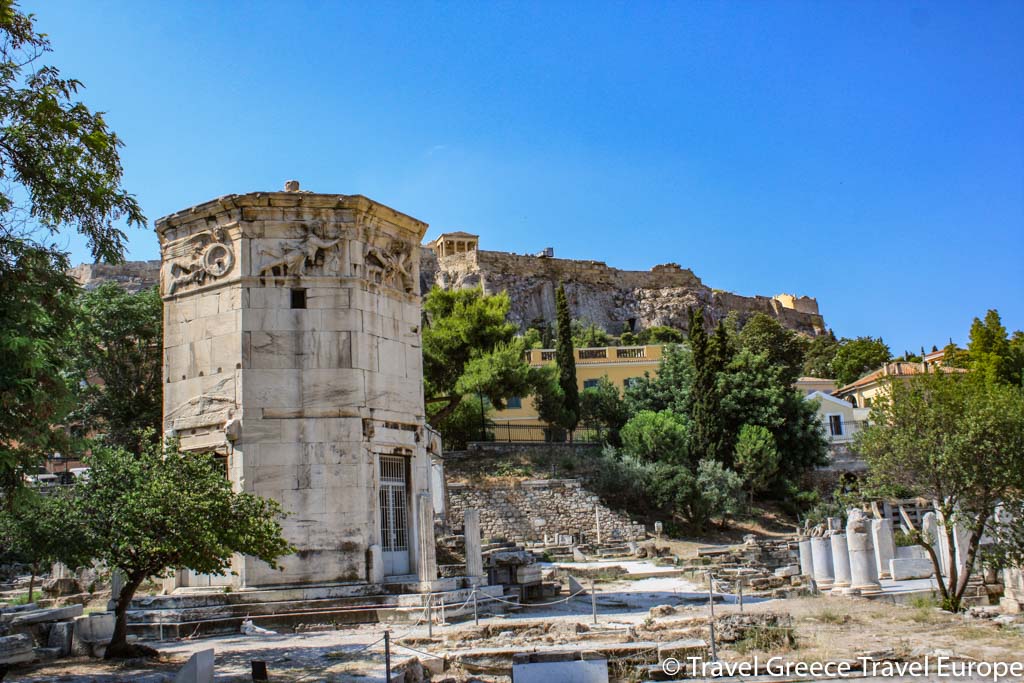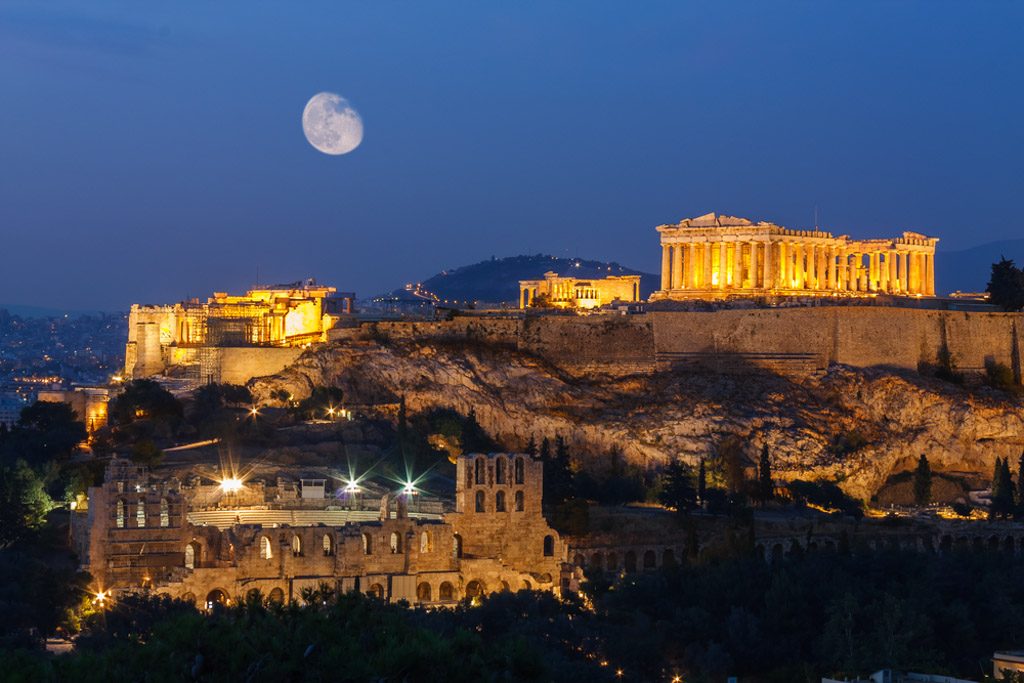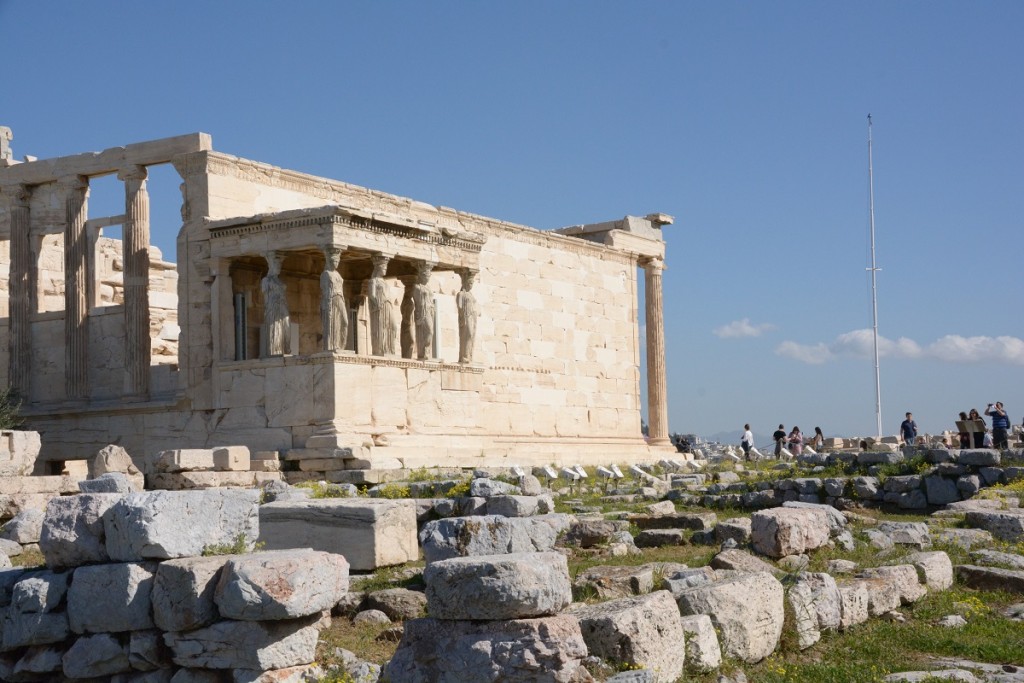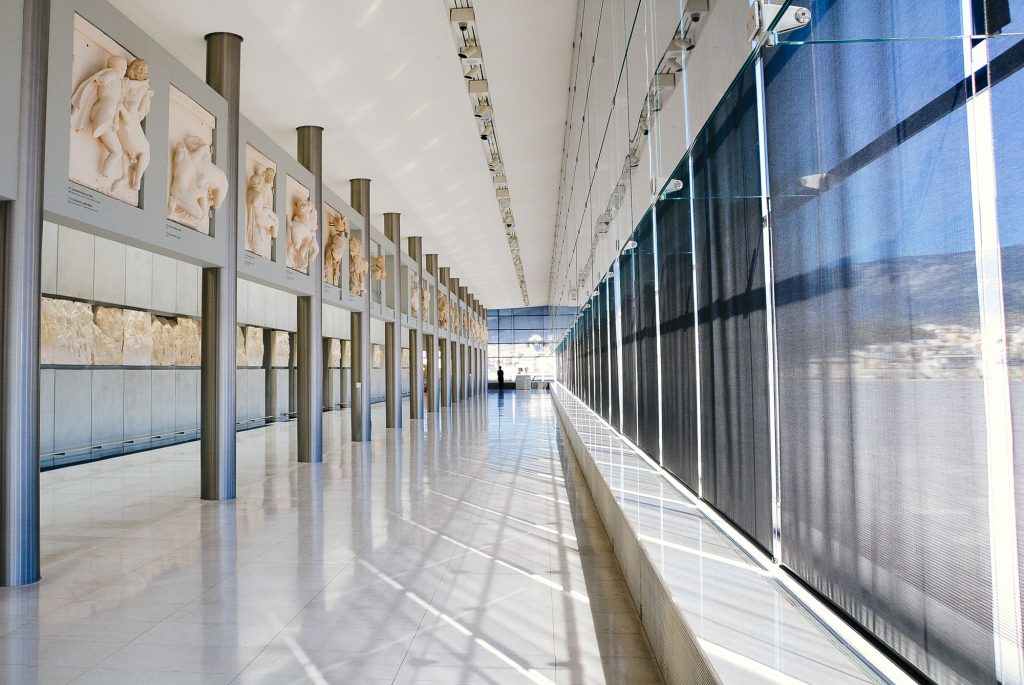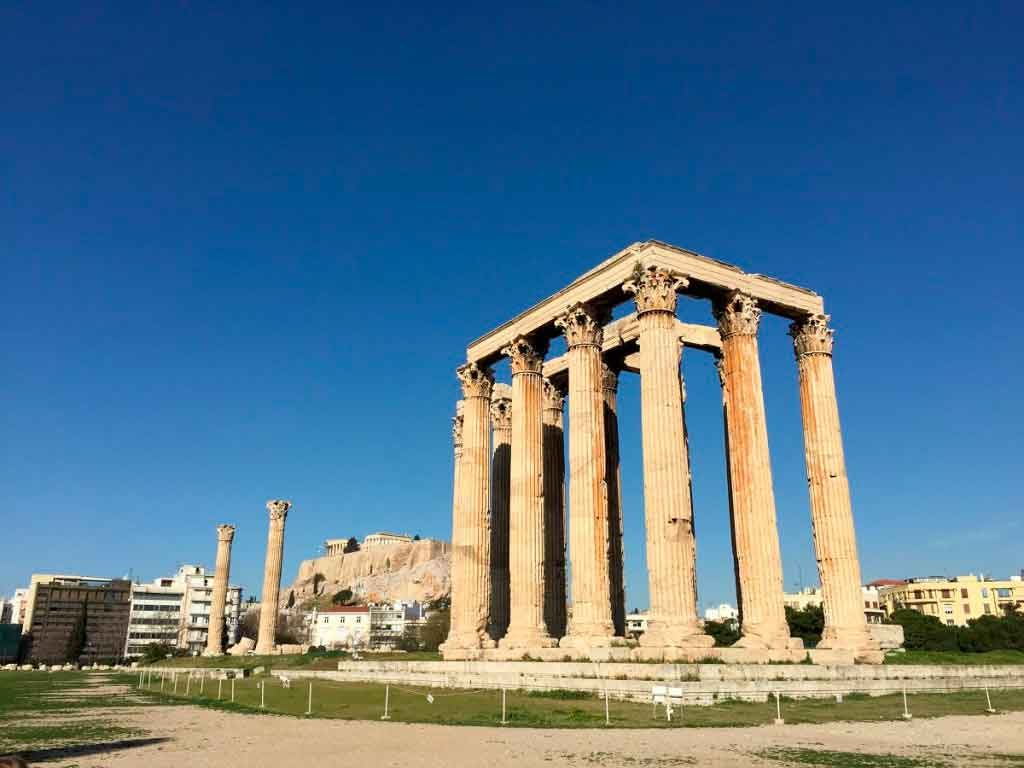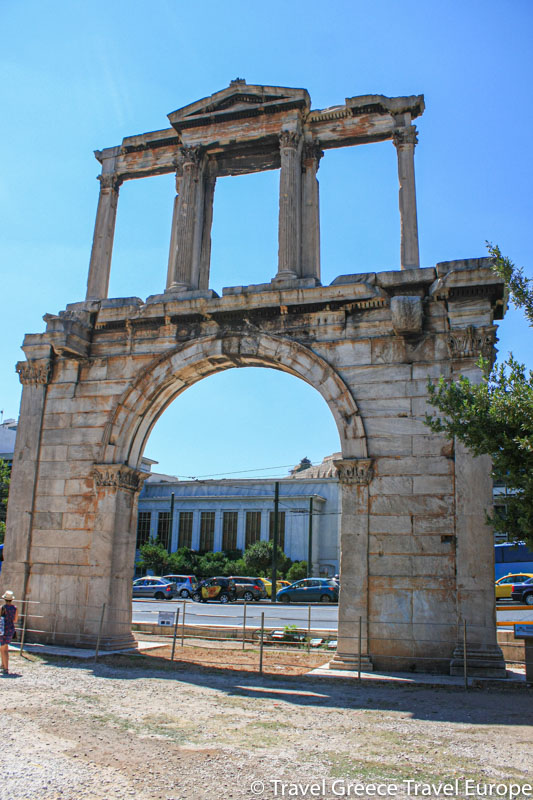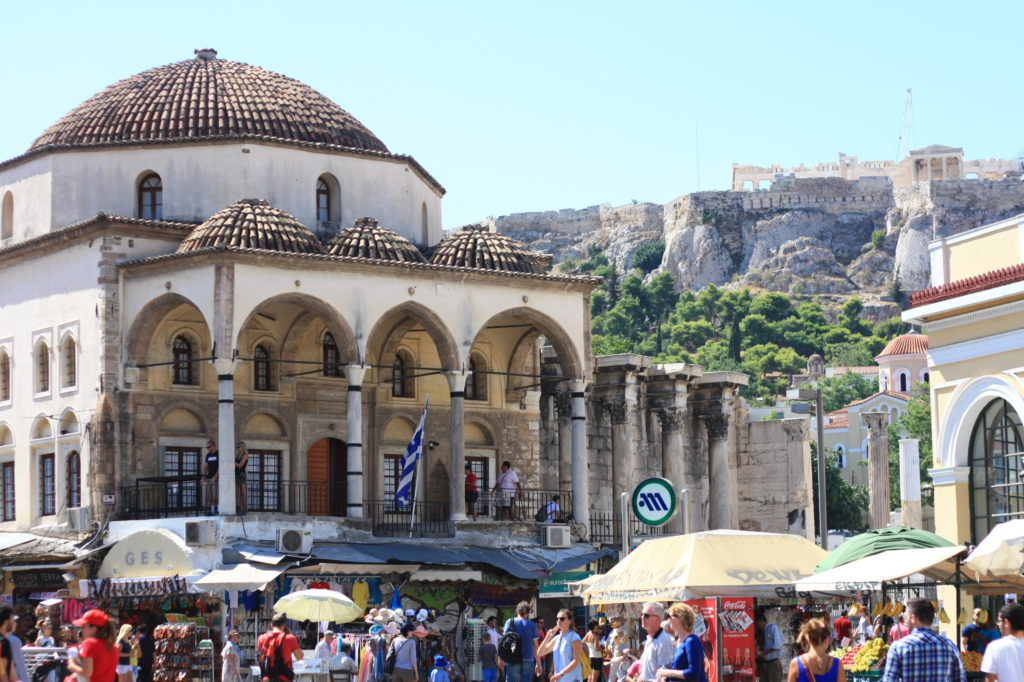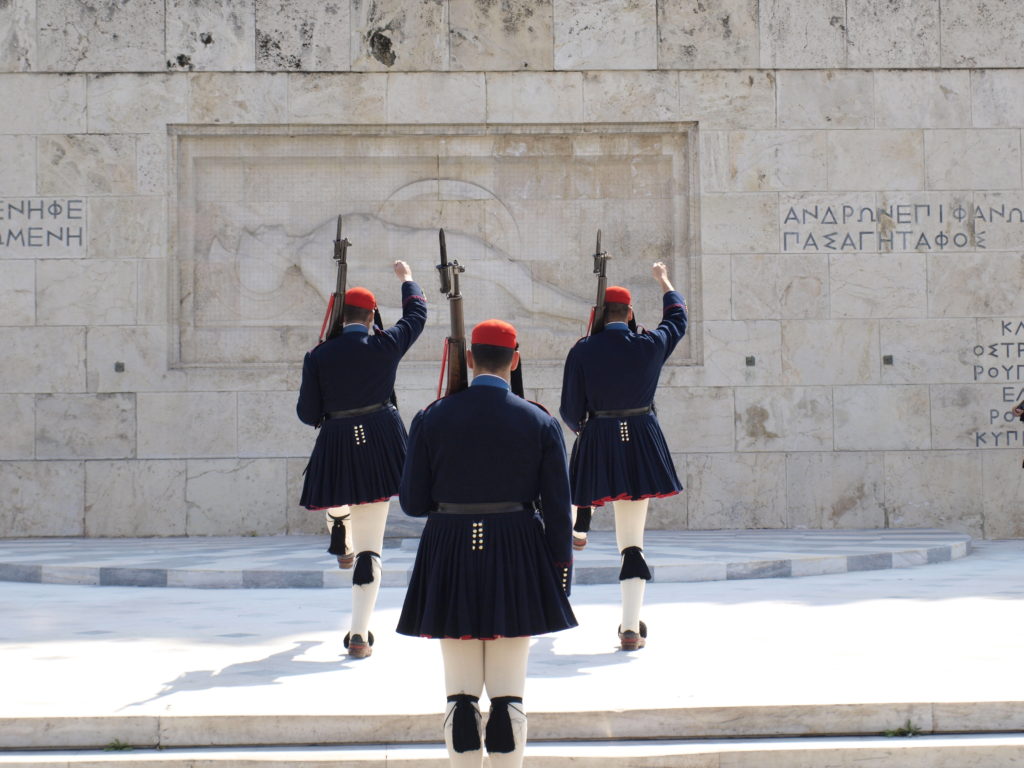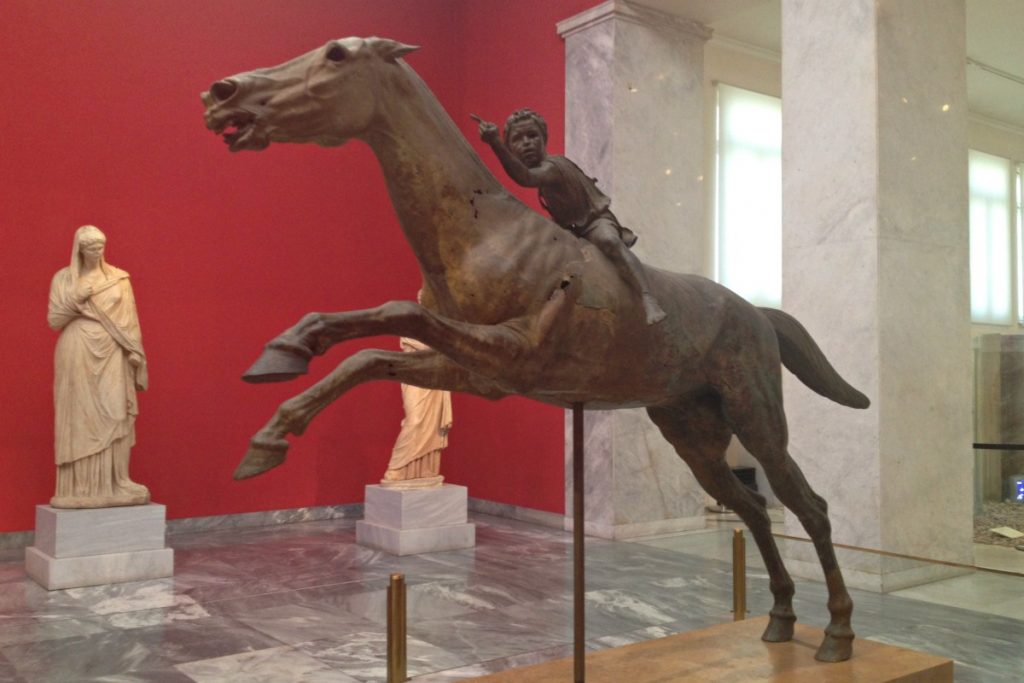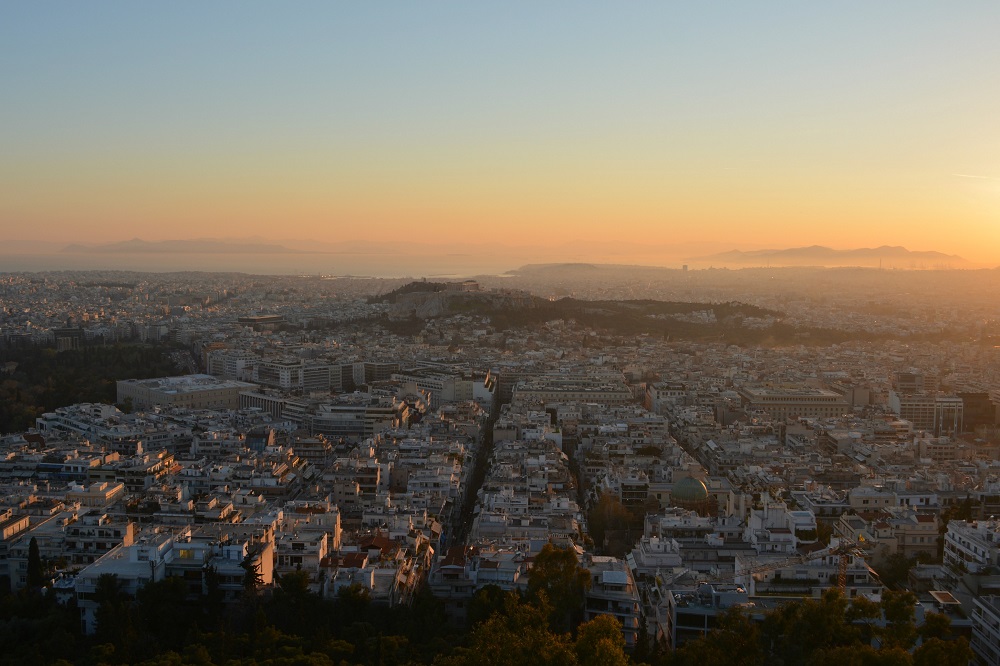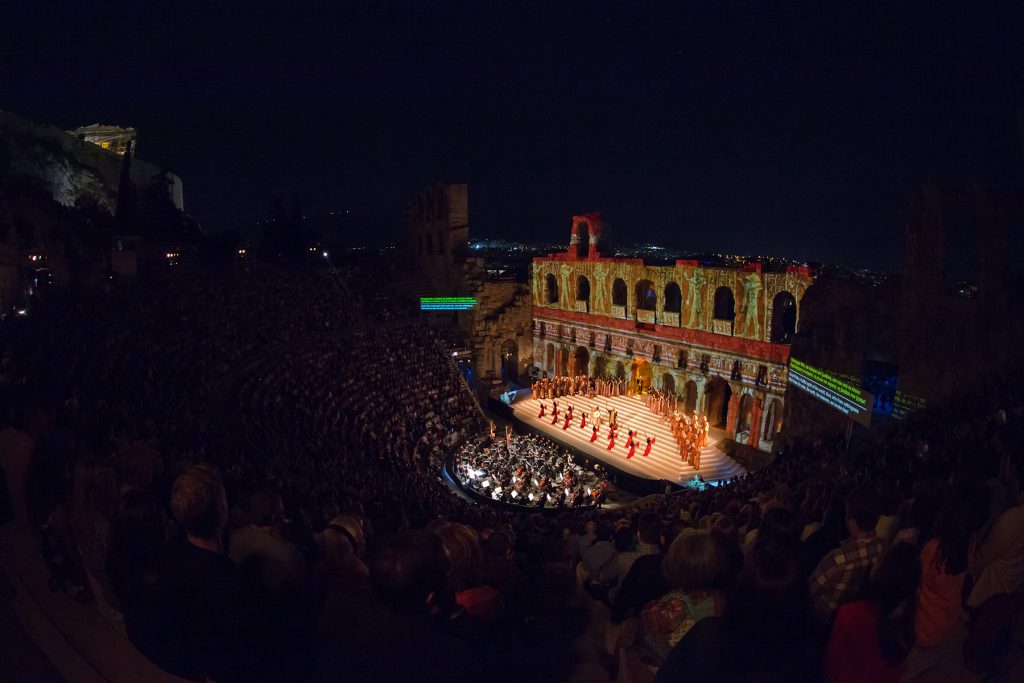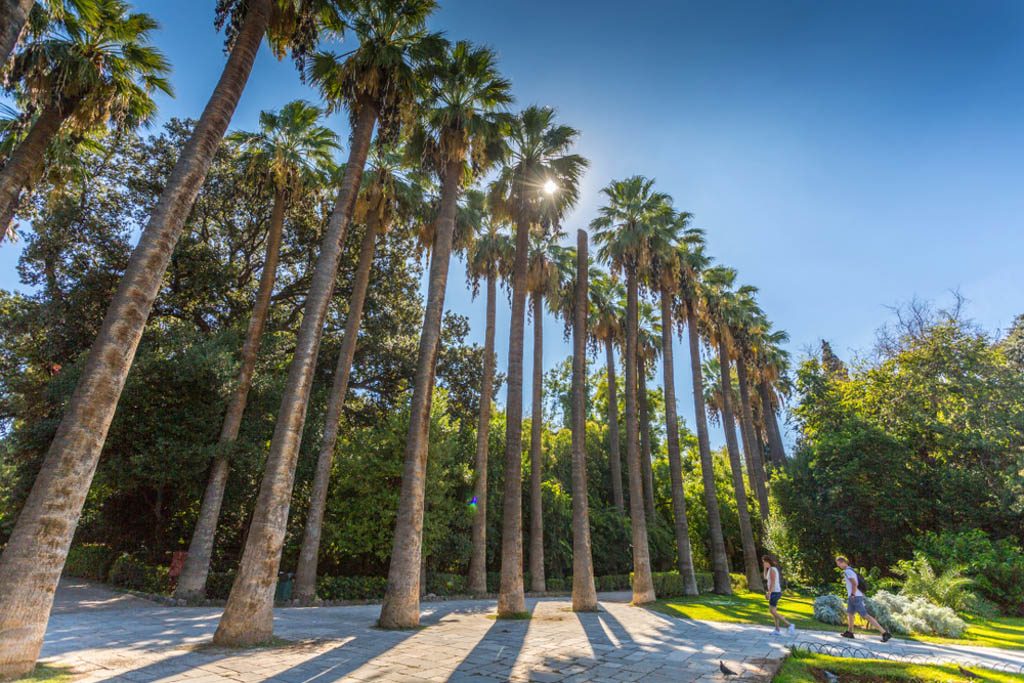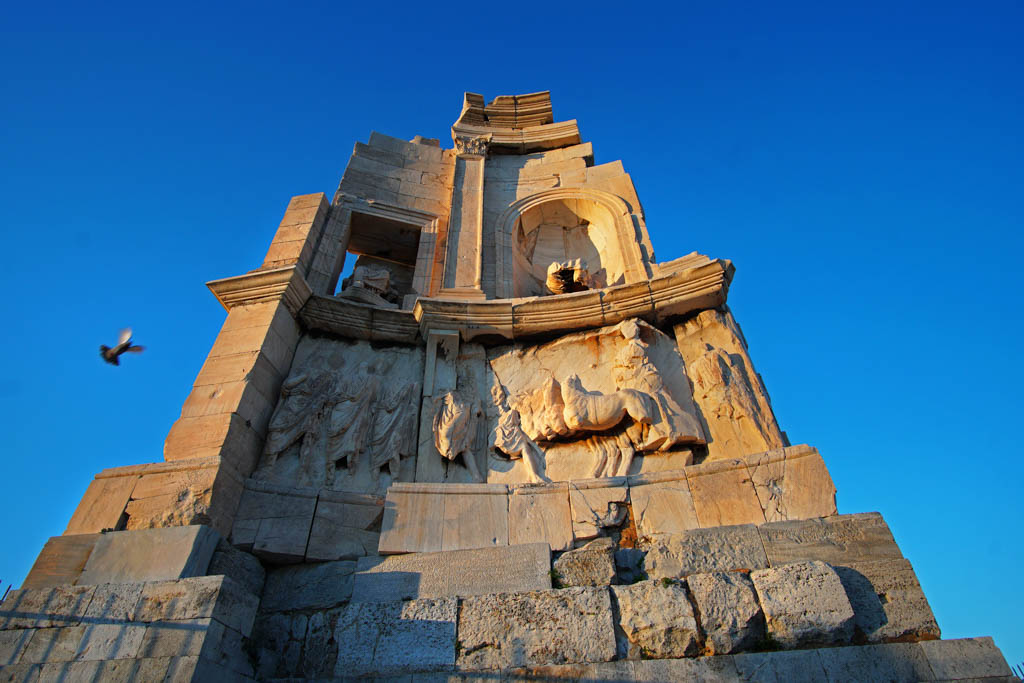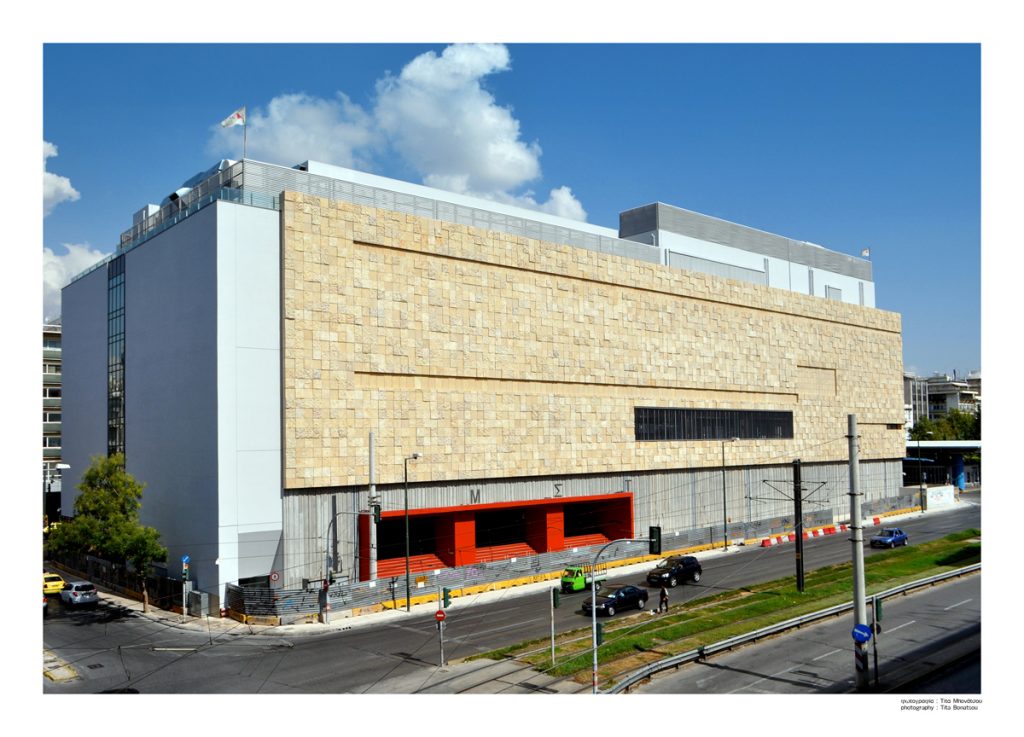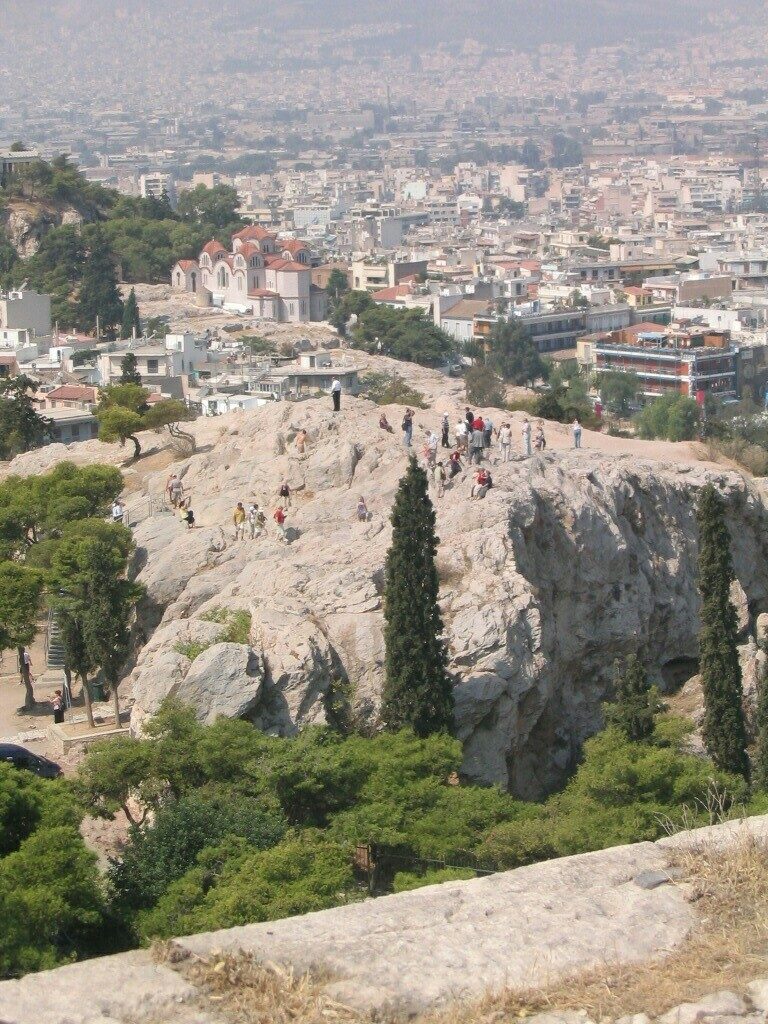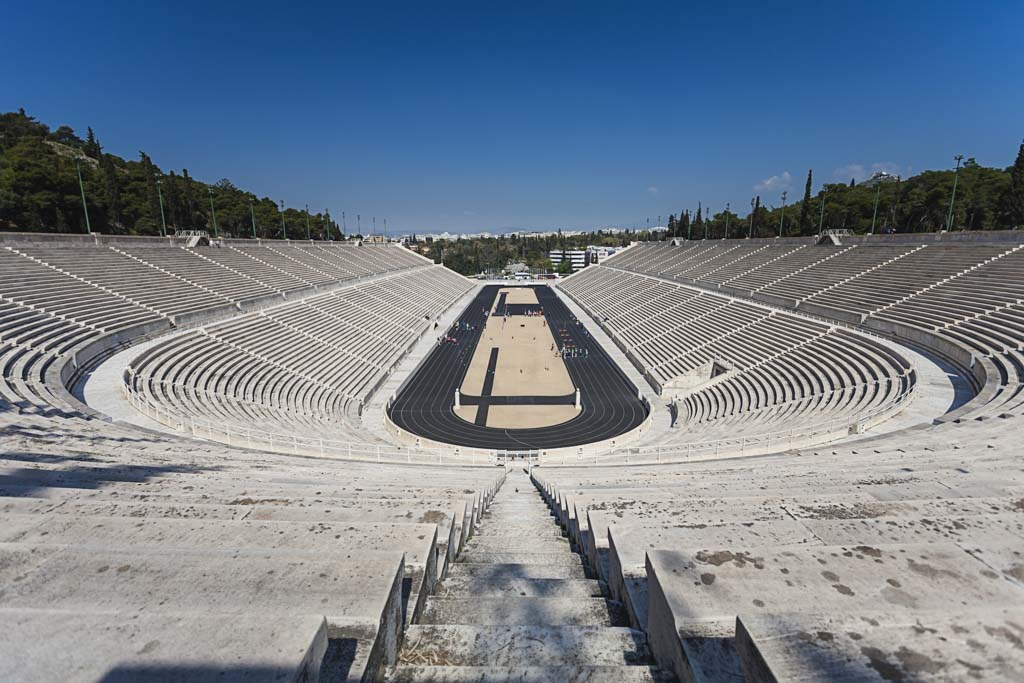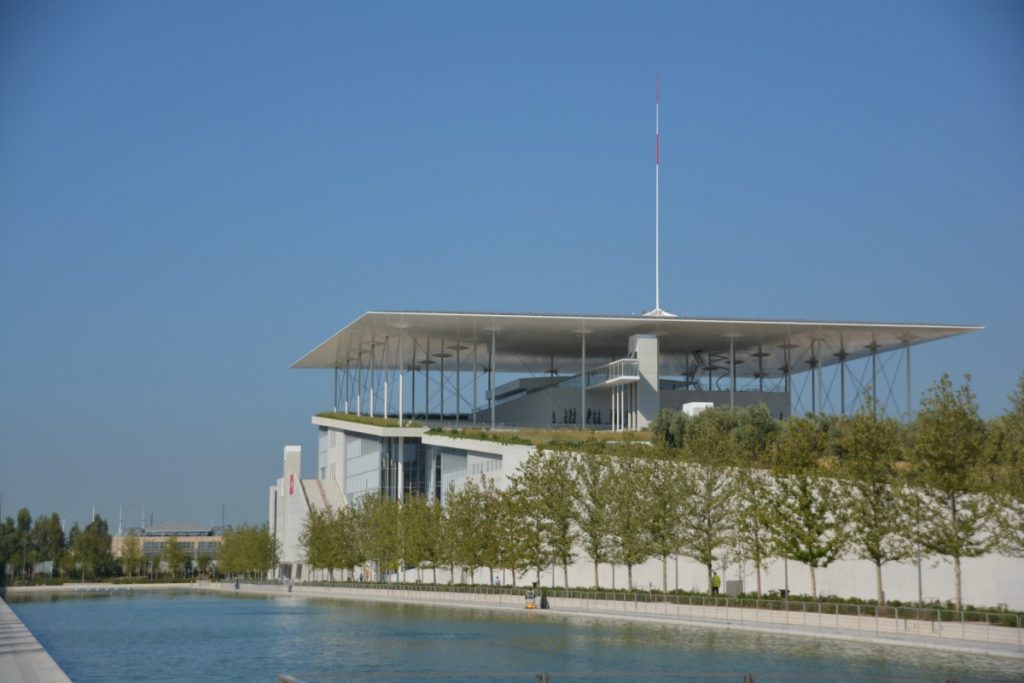The beautiful capital of Greece, Athens, was the heart of Ancient Greece, the birthplace of philosophy, astronomy, democracy, mathematics, the Olympic Games and the list goes on. Athens was once one of the most powerful empires, which is evident in the landmarks, monuments, and ruins that modern Athens has inherited to this day. The city has been inhabited for more than 3,000 years and is spread across seven historic hills. We have created a list of 23 tourist attractions all visitors ought to visit when in Athens.
23 Tourist Attractions in Athens you must not miss
1. The Plaka and Anafiotika Neighborhoods
Residing under the area of Acropolis the Plaka District resembles a small island village with its colorful nobly houses, the bougainvillea trees shadowing the narrow streets and the traditional tavernas spreading their tables through the stairs reigning the scenery. The neighborhood of Plaka is home to some of the most expensive houses in Athens, as the views and the tranquility of the area can not be compared to any other in the center. The famous Greek tavern, named Anafiotika, attracts Greeks and tourists all year round, where they can degust on delicious freshly made food and house wine to the sound of live Greek music dominated by the “bouzouki”.
Recommended tour:
Athens: Acropolis and Old Town Small Group Walking Tour
2. Ancient Agora
The Ancient Agora was the marketplace and the center of everyday life in ancient Athens. I was also where Greeks would concentrate and discuss philosophy, politics, current events or astronomy. In this spot is where the traces of the beginning of Democracy can be found. It is a beautiful area enclosed for its preservation where visitors can also visit the museum of the Ancient Agora where art crafts such as bronze, clay and glass objects, sculptures, coins dating back to the 7th century BC can be found. In the Agora there are also temples dedicated to God Hephaestus and a smaller one for Apollo Patroos. The Ancient Agora is located northwest of Acropolis.
Recommended tour:
Athens: Agora, Plaka & Monastiraki Private Tour
3. Roman Agora
In the north of the Acropolis and east from the Ancient Agora, located in the area of Monastiraki is the Roman Agora. The Roman Agora was constructed later in the 1st century BC by the Roman Emperors Julius Caesar and Augustus and the purpose was purely to be an open-air marketplace featuring shops. Along the centuries and the numerous invasions first by Venetians and later by the Ottomans in 1400, the Roman Agora was destroyed and its ruins were covered by houses, workshops, and mosques. The Fethiye Mosque built by the Ottomans during the 17th century is still standing to this day, however, it has been repurposed for the use of exhibitions and conferences.
Recommended tour:
Acropolis, Plaka & Ancient Agora Guided Tour without Tickets
4. Tower of the Winds
Found in the Roman Agora, located between the districts of Monastiraki and Plaka, the wind tower ruins are part of the first meteorological station ever to exist. Made from Pentelic marble, the wind tower was once a clock tower, from where ancient Greeks could tell the time of the day. It was built in the year 50 BC and the founder was the astronomer Andronicus of Cyrrhus and other functions of the tower apart from telling the hour, included forecasting the weather.
Recommended tour:
Athens Private Acropolis and Other Ancient Sites Tour
5. Acropolis
Acropolis is the jewel of Athens. Rising in the basin of Athens, the Acropolis monument is the most well-conserved monument still existing from the Greek ancient times. Acropolis derives from the synthetic word acro and polis, which means the edge of the city, as in the highest point of the city, the spot from where guards could oversee the whole city in Ancient Times and detect any enemies or external coups.
The Parthenon, which is the most important landmark in Greece’s history, majestically brightens the city of Athens. The building was built in the 4th century BC in honor of the goddess Athena, who was Athens’ city patroness. Through the years and the many foreign invasions of the country, the Parthenon deteriorated, until in 1975 the restoration project of the temple of Athena Nike was initiated to recreate the perfect replica, consisting of new parts and the ruins left behind.
Recommended tours:
Acropolis: Guided Walking Tour with Entrance Ticket
Athens: Hidden Historical Gems Private Walking Tour
6. The New Acropolis Museum
The New Acropolis museums opened its door to the public in the year 2009, depicting a total of 3.000 artifacts found in Acropolis and the areas surrounding. The first Acropolis museum was built in 1874, however, when new excavations in the city uncovered new artifacts the urgent need for more and modern space was responded by the creation of the new museum, which has a total area of 25,000 square meters, which is approximately 15 times the size of the old one.
The Museum has been built on top of parts of ruins of Roman and early Byzantine Athens. The significant structure of the museum has been designed precisely to be accessible to people with special needs. The glass surrounding the upper floor levels allows the visitors to admire the Acropolis from a distance, while they can also enjoy delicious meals at the museum’s restaurant on the rooftop terrace.
Recommended tours:
Athens: Acropolis & Acropolis Museum Tour
Athens: 3-Hour Private Acropolis Museum By Night Tour
Athens: Private 4-Hour Tour with Acropolis and Old Town
7. Temple of Olympian Zeus
The temple dedicated to the head of the Olympian God Zeus, also known as the Columns of the Olympian Zeus, is the largest one in Greece. The construction of the temple began during the 6th century, under the tyrant Pisistratus, who envisioned building the largest and greatest temple, but was not completed for almost 6 centuries, when Roman Emperor Hadrian decided to conclude the project. Once the temple was held by 104 columns of 17metres each, however, today only 15 are still standing.
Recommended tour:
Zeus Temple, Acropolis & Museum Private Tour without Tickets
8. Hadrian’s Arch
History has that the Arch was constructed to honor the arrival of Roman Emperor Hadrian in Athens and his contributions to the town, as was the conclusion of the Temple of Olympian Zeus, located behind the Arch.
The monument is constructed by marble derived from the Mountain Penteli, located 18km away, as is its neighboring temple. There are two interesting inscriptions carved on the bottom of the arch one on the northwest and the other on the northeast side.
The first writes: ΑΙΔ’ ΕΙΣΙΝ ΑΘΗΝΑΙ ΘΗΣΕΩΣ Η ΠΡΙΝ ΠΟΛΙΣ – This is Athens, the ancient city of Theseus.
The second: ΑΙΔ’ ΕΙΣ’ ΑΔΡΙΑΝΟΥ ΚΟΥΧΙ ΘΗΣΕΩΣ ΠΟΛΙΣ (this is the city of Hadrian, and not of Theseus).
Recommended tour:
Athens: Mythology, Gods and Legends Small-Group Walking Tour
9. Museum of Cycladic Art
The museum hosts a world-class collection of Cycladic Art featuring more than 3,000 artifacts made of marble stone, clay, bronze, silver, gold, glass, and faience, which date back to 3300 to 1100 BC, found in the many then inhabited islands of the Aegeon Pelagos. The pieces of art are grouped depending on the utility of the object, if it was a toy or a culinary object, the dating or the location found, objects tributed to Gods or Heroes, in order to give a better picture of ancient Greek Civilization to the visitors.
The museum is open every day except Tuesdays from 10:00 am to 17:00 pm and a full-priced admission ticket is 7 EUR.
10. Monastiraki and Flea Market
The district of Monastiraki is located under the Roman Agora and is the modern marketplace where hundreds of souvenir but also commercial shops can be found today. During the weekend the area becomes a huge flea market famous for the antique pieces sold at generous prices. The area is rich in traditional restaurants and souvlaki shops attracting many tourists. It is also known for the rooftop bars and cafeterias from where visitors can admire the beautiful city and Acropolis views.
11. Changing of the Guards at Syntagma Square
The most central point of Athens city is the Syntagma Square, where the Hellenic Parliament building is located. A very famous attraction/event for tourists visiting Athens is the symbolic changing of the Guards in front of the Tomb of the Unknown Soldier. The guards known as Evzones who wear traditional costumes which comprises of pleated skirts, leg tassels and “tsaruxia”, the traditional Greek shoes with pom-poms on the top, are in position 24/7 all year round.
12. The National Archeological Museum
The National Archeological Museums is Greece’s greatest and largest museum. With over 20,000 exhibits, the museum’s intention is to depict a panorama of Greek Civilization from prehistoric times to Late Antiquity. The museum houses some of the most well-preserved, rarest, and famous statues from Ancient times, like the Antikythera mechanism, which is said to be the firsts traces of a computer, the Bronze Statuette of Athletic Spartan Girl and the Gold Nestor’s Cup, which is described in the epos of Iliad. The museum also houses a 118years old library of 20,000 volumes including archeological rare ancient art, science, and philosophy books. The neo-classical building, built in the 19th century, also houses modern conservational laboratories, a photographic and chemistry laboratory, exhibition spaces, and a lecture hall where archeological lectures take place.
Recommended tour:
Acropolis and National Museum Private Athens Tour
13. Mount Lycabettus
Mount Lycabettus is the highest point in Athens, situated at over 300 meters above sea level. The 360° view of Athens city from the hill is simply breathtaking. The most beautiful images fill the eyes of every visitor, facing the Acropolis to Piraeus and the Athenian Riviera. The Lycabettus Mount is a very popular destination for sunset and sunrise lovers, as one can expect both the setting and the rising of the sun from that point is fascinating. One of the best restaurants in town is located on the top of the hill, named Orizondes- a modern Mediterranean cuisine restaurant with distinctive service, high-quality dishes made with the finest ingredients and of course unique views, attract a lot of visitors. To climb the hill you hike from Syntagma Square, which takes an hour and a half or you could hop on an underground cable car that crosses the hill and takes you right to the top! Also check out our post on Top 5 Spots: The Best View of Athens
Recommended tour:
Athens: 1-Hour Mount Lycabettus Tuk-Tuk Ride
14. Odeon of Herodes Atticus
Lying just at the foothill of the Acropolis is the marvelous ancient open-air theater – the Odeon of Herodes Atticus. Built between 22 BC – 15 BC by the Greek politician and philosopher Herodes Atticus in memory of his late Roman wife Regilla. In the 1950s the audience stands and the stage were restored to accommodate the Athens Festival which runs every year from May to October. Famous and acclaimed Greek, as well as international artists, have performed in the theater like Maria Callas, Frank Sinatra and Luciano Pavarotti.
15. National Garden and Zappeion
Located in the heart of Athens, next to Syntagma Square the green abyss of the National Garden is ideal for a walk during a sunny day. Besides the beautiful trees and flowerbeds which naturally decorate the park, statues and ancient ruins and monuments also give a majestic touch to the scenery. The building of Zappeion and its garden can also be found on the premises of the National Garden. The Zappeion today is used to host conferences and ceremonies, but was once a building where important historical events took place. Is in this building where Greece was signed in to be part of the European Community in 1979.
16. Philopappos Hill
Southeast from the Acropolis area, another famous hill surrounded by rich greenery stands out. That is the Philopappos Hill, named after the monument located there dedicated to Gaius Julius Antiochus Epiphanes Philopappos, a Roman prince who ruled the ancient Greco-Iranian kingdom Commagene, who had also been buried there. The hill, 150 meters high above sea level offers beautiful views of the Acropolis, Athens and the Aegean Sea.
17. The Prison of Socrates
Beneath the Hill of Philopappos, on the eastern side, two caves carved into the rock hill are said to be former prisons where the greatest Greek philosopher Socrates was locked up around the year 399 BC. Socrates was accused for brainwashing the young generation against democracy and the city-state order. He was also blamed for political corruption and for doubting the pantheon, the existence of the Olympian Gods. He was sentenced to death and had to carry on his own execution by drinking a poisonous beverage of hemlock. In these old prisons, Greeks hid pieces of art from the Acropolis and the National Archeological Museum during the occupation of the Nazis during WW2.
18. Benaki Museum
The Benaki Museum is located in the family mansion of Emannouil Benakis, a man who is considered a national benefactor to Greece. The museum houses 120,000 Greek pieces of works of art from prehistoric to modern times, representing the various stages of greek culture. The venue is home to an extensive collection of Middle-Eastern, Islamic and Asian art, it hosts periodic exhibitions and maintains a state-of-the-art restoration and conservation workshop. The larger contribution to the museum was made by the Benakis family themselves in 1934 when they donated 37,000 Islamic and Byzantine objects to be displayed at the properties of the museum.
Recommended tour:
Athens: Private Guided Tour of the Cycladic & Benaki Museums
19. EMST
EMST is the National Museum of Contemporary Arts in Athens. The art collected and displayed at the museum dates back to the postwar period up until the present and features 172 artworks, created by 78 Greek and International artists. Awarded contemporary artists like Costas Varotsos, Ilya and Emilia Kabakov, Pedro Cabrita Reis, Kim Sooja among others are displayed in the permanent exhibition of EMST. All these artists focus on the same following topics: Memories, Political narratives, Limits and passages and Eterotopias, Mythology of the familiar and New Perspectives. An artwork itself is the building which hosts permanently the EMST collection since 2014. Located in Syngrou Avenue, the building is a former FIX Brewery built in 1961 and then abandoned in 1982. The high ceilings, the glass windows scattered around the walls of the establishment, the spacious rooms, all benefit the exhibition of the artworks, which permits each one to have their own place and “privacy”.
20. Byzantine and Christian Museum
One of the largest and most significant museums of Byzantine Art in the world is located in Athens, the Byzantine and Christian Museum. The collection of artcraft sums up to approximately 30,000 pieces and includes works of art such as pottery, icons, ceramics, ecclesiastical textiles, statues, sculptures, paintings and jewelry dating back from the 3rd century AD to the Late Middle Ages (20th century). This is a great museum to admire the glories of the Greek Orthodox Christianity.
21. Areopagus
The giant rock located on the northwest side of Acropolis, just across the entrance of the monument, is the Areopagus or Hill of Ares. The site in ancient Greek times was used as a governmental institution where the oldest hence wiser tried cases of homicide, religious matters, robbing, and even cases concerning arson of olive trees! This constitution existed way before Democracy was born in Athens. Today, on this hill visitors can climb free of charge and admire the most beautiful 360 degrees views from Athens. On the Southwest Acropolis, on the Southeast the Aegean Sea, on the West the Philopappos Hill, looking down the ancient Agora and anywhere else one look they can gaze on the beautiful city of Athens and the rich greenery that surrounds the site.
22. Kallimarmaro Stadium or Panathenaic Stadium
Built during the era of Herodes Atticus, roughly around 335 BC, this stadium is of great importance in the history of sports, as it has hosted several Olympic Games for centuries. Built entirely from marble, the stadium accommodates up to 50,000 seating spectators and is one of the oldest stadiums still operating in modern days. Of course, the stadium visitors admire today is a replica of the original Kallimarmaro Stadium, which was rebuilt to host the 1896 Olympic Games, the first international one held in modern history. Since then the venue has hosted one more time the Olympics in 2014, the 1997 World Championship in Athletics, the Special Olympics in 2011, and famous artists’ concerts such as the Scorpions & the R.E.M.
23. Stavros Niarchos Foundation Cultural Center
Stavros Niarchos Foundation Cultural Center is a multifunctional and environmentally sustainable complex in Kallithea, the region of Athens. The whole Center, which consists of the National Library of Greece, the Greek National Opera, and the 210,000 m² Stavros Niarchos Park, was a donation of the Stavros Niarchos Foundation to the Greek state and for all Greeks delivered in 2017. The SNF committed to fund all the costs of the Center which summed up to €630 million, including a €20 million grant to help maintain and sustain the center for the first four years of its operation. The purpose of the Center was to provide a space where everyone, regardless of disabilities, could have free access to education, recreation, arts, music, culture, sports and nature.
Recommended tour:
From Athens: E-Bike Ride to the Sea

